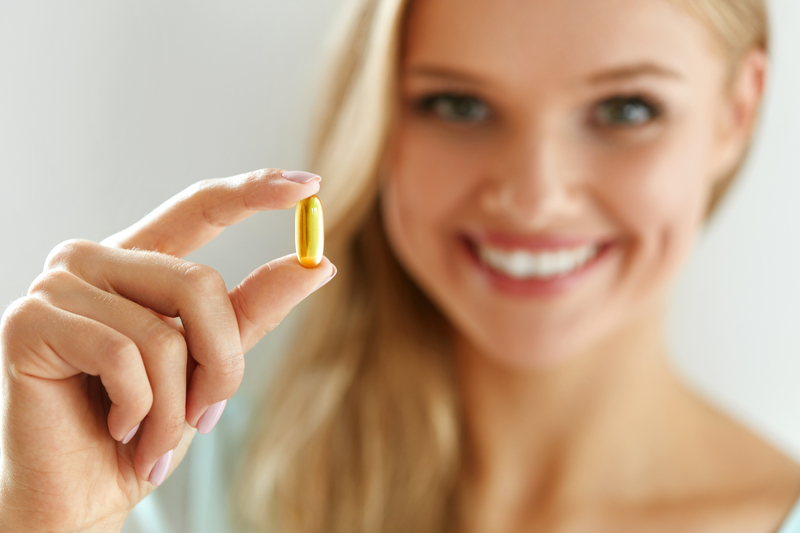My daughter is now taking five dance classes a week, so at a recent visit to her pediatrician, I asked about testing for vitamin D deficiency. Our physician stated that in most cases she doesn’t even bother with the test because in the over 30 years she has been practicing medicine, the majority of her patients test low for vitamin D. While she’s not suggesting that a blood test for vitamin D status isn’t potentially valuable (it can be), she’s only saying that this particular deficiency is much more common than people realise. In fact, it’s very common in dancers who exercise for long hours indoors1,2,3. Don’t worry; it’s also easy to restore levels with some inexpensive supplements and dietary tricks.
What are some typical problems with low vitamin D status?
The principal function of vitamin D is to help the body maintain the right levels of calcium in and out of the cells. It helps regulate levels of calcium and phosphorus, helps in bone growth and remodeling, which is why it’s considered the “bone health vitamin”. This probably isn’t news to most dancers, but did you know that this key vitamin can inhibit the growth of cancer cells specifically of the prostate, breast, colon and esophagus4? Vitamin D can act as a hormone, and it also plays a key role in immune function3,4. Most interesting to dancers may be the key role in muscle strength that vitamin D plays, in addition to helping build certain muscle fibres that matter in power and anaerobic activities (like certain types of dance activities). Inadequate vitamin D status has been associated with weaker muscles.
What foods contain vitamin D?
Vitamin D is notoriously difficult to get naturally through food unless you really like cod liver oil or sardines. However, many foods now are fortified with added D such as cow’s milk/dairy, some plant-based milks, yoghurts, beverages and even nutrition bars and cereals. Check out this Dance Informa article for exactly how to get adequate vitamin D and calcium through food without cow’s milk. Vitamin D is a fat soluble vitamin, which means it needs a little dietary fat for absorption. Dancers on extremely restrictive diets will likely impact their vitamin D status.
If I supplement, what do I look for on the label?
The active form is vitamin D3, also known as cholecalciferol. Institutes of Medicine currently recommend 600-800 IU (international units) as a baseline daily amount. Many professionals question, however, whether this is adequate. Individual needs will vary depending on age, developmental stage and sunlight exposure, but as a dietitian who works with dancers, I typically recommend 800-1000 IU as a baseline. I might recommend up to 3000 IU for teenage to adult dancers at high risk for fractures. It’s important not to go overboard on this key vitamin. Remember, it acts like a hormone, too. Too much is not a good thing. Try to get a little sunlight on exposed skin each day. You certainly don’t have to bake in the sun; there has to be a middle ground between getting vitamin D through the skin from the sun and preventing skin cancer.
What if I have a history of stress fractures or bone breaks?
Supplemental vitamin D3 should be in any dancer’s toolbox if he/she has had a stress fracture, but you shouldn’t stop there. Taking a good look at dietary risk factors has to also be a part of the plan. Dancers who go for too long during the day without eating a meal or snack or who don’t eat adequate food sources of calcium, phosphorus and vitamin K will increase their risk for low bone mineral density. Supplements can only do so much; diet matters.
What if I’m supplementing but my levels aren’t going up?
This is when it’s critical to get a blood test for vitamin D status and work with a registered dietitian. Talk with a health professional about the potential for malabsorption in the GI tract due to inflammation or potentially celiac disease.
 By Emily C. Harrison MS, RD, LD of Nutrition for Great Performances.
By Emily C. Harrison MS, RD, LD of Nutrition for Great Performances.
Emily Cook Harrison MS, RD, LD
Emily is a registered dietitian and holds both a bachelor’s and master’s degree in nutrition from Georgia State University, USA. Her master’s thesis research was on elite level ballet dancers and nutrition and she has experience providing nutrition services for weight management, sports nutrition, disordered eating, disease prevention, and food allergies. Emily was a professional dancer for eleven years with the Atlanta Ballet and several other companies. She is a dance educator and the mother of two young children. She now runs the Centre for Dance Nutrition and Healthy Lifestyles. She can be reached at emily@dancernutrition.com
www.dancernutrition.com
Sources:
- Ducher G, Kukuljan S, Hill B, Garnham AP, Nowson CA, Kimlin MG, Cook J. Vitamin D status and musculoskeletal health in adolescent male ballet dancers a pilot study. J Dance Med Sci. 2011 Sep;15(3):99-107. www.ncbi.nlm.nih.gov/pubmed/22040755
- Brown DD. The Importance of Vitamin D for Dancers. International Journal of Dance Medicine and Science. 2017. www.iadms.org/blogpost/1177934/274097/The-Importance-of-Vitamin-D-for-Dancers
- Dana Ogan*and Kelly Pritchett. Vitamin D and the Athlete: Risks, Recommendations, and Benefits. Nutrients. 2013 Jun; 5(6): 1856–1868 www.ncbi.nlm.nih.gov/pmc/articles/PMC3725481
- Modern Nutrition in Health and Disease tenth edition. Lippencott Williams & Wilkins. 2006

















